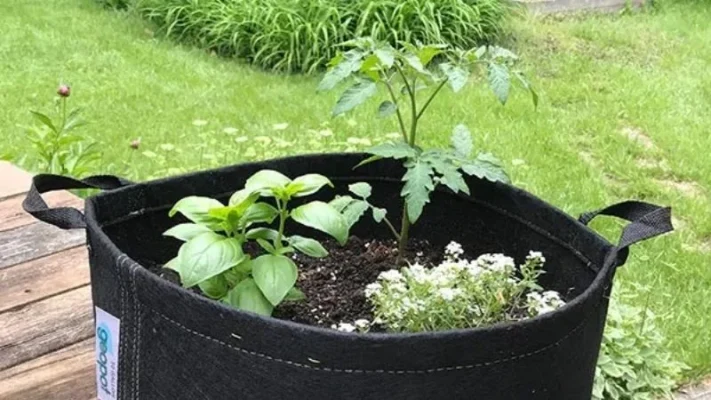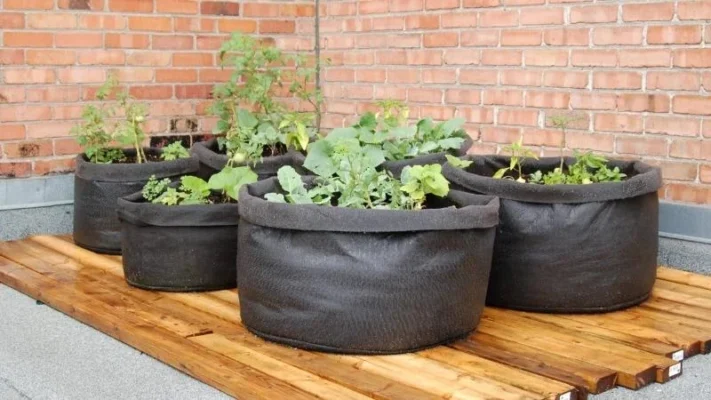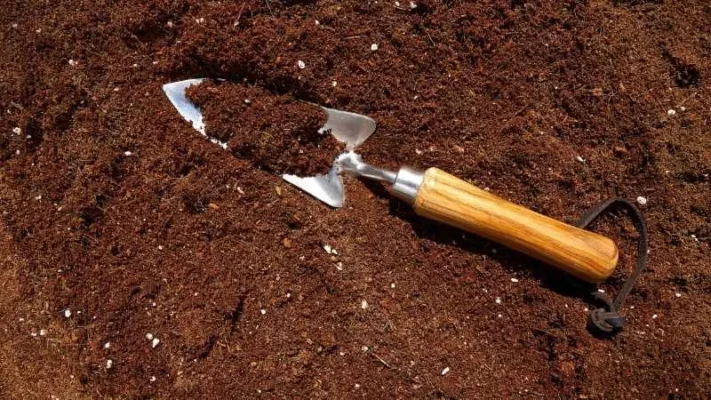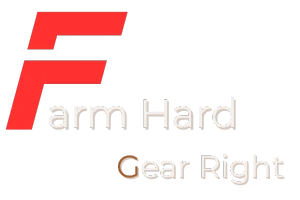I. Introduction
A friend of mine — or more accurately, a few readers of FarmGears.com — once messaged me:
“I’d love to grow veggies, but how can I, living in a city? I rent, and all I have is a tiny balcony. How could I possibly have a garden bed?”
I get it — not everyone has land to dig up. But here’s the good news: you can start your own compact garden with one of the most flexible and budget-friendly solutions out there — fabric raised beds.
No need for wood. No need for metal. For just a few bucks, you can create a simple, breathable garden bed that drains well and folds away when not in use. Let’s dive into why fabric beds have become the secret weapon for urban gardeners across the U.S.

II. What Are Fabric Raised Beds?
Over the past few years, fabric raised beds have gained popularity among city gardeners — especially renters, apartment dwellers, and anyone seeking a low-commitment, easy-to-set-up option.
1. What They Are & How They’re Made
Fabric raised beds are soft-sided grow bags made from durable fabrics like:
• Geotextile fabric – typically used in construction; strong and drains well.
• Non-permeable woven polyester – holds soil while allowing airflow.
• Non-woven fabric – lightweight, affordable, and easy to manufacture.
They usually come in bag or box form, often with carry handles, and can be collapsed flat when not in use — perfect for storage or off-season cleanup.

2. Key Advantages
✅ Affordable: Entry-level beds cost just $10–30 — ideal for beginners.
✅ Excellent drainage & breathability: The porous fabric keeps roots from drowning.
✅ Fast setup: No screws, no hammering — just fill with soil and plant.
✅ Flexible & portable: Move or store them easily without permanent impact.
💡 Still debating between wood, fabric, or even concrete blocks? Check out our full guide: Best Materials for Raised Garden Beds.
3. Downsides to Consider
❌ Shorter lifespan: Depending on the fabric and weather, expect 2–5 years of use.
❌ May collapse if underfilled: Without full soil support, the sides can sag.
❌ Rodent and insect risk: If placed directly on the ground, pests might nest underneath.
4. Popular Sizes & Shapes
Fabric beds come in a wide range of sizes — from compact 7-gallon pots to 100+ gallon garden tubs. Common shapes include:
• Round – great for clusters of greens or shrubs.
• Rectangular/Square – makes the most of space; easy to align in rows.
• Vertical bags – ideal for tight spaces; stackable for more growing area.

5. Best Crops to Grow in Fabric Beds
Fabric raised beds are particularly well-suited for:
• Leafy greens: Lettuce, spinach, Asian greens, Swiss chard, etc.
• Quick crops: Cherry tomatoes, chili peppers, and dwarf climbing beans thrive well in fabric beds — and many of them grow even better with a simple garden bed trellis to provide vertical support
• Soil experiments: Great for testing out new soil mixes or companion planting.
• Tight spaces: Perfect for balconies, patios, small yards, and rooftops.
III. What Real Gardeners Are Saying
1. Feedback from the Gardening Community
We dug into Reddit threads and gardening forums to see how folks are using fabric raised beds in real-life urban setups. Two comments stood out, highlighting both pros and cons from experienced users:
“It depends on what you grow and your local climate.”
One gardener in a hot, sunny U.S. region shared:
• Drainage is top-notch, and unlike plastic or ceramic pots, fabric doesn’t retain heat — perfect for hot summers and keeping roots cool.
• The air-pruning effect promotes strong root growth as roots self-trim when exposed to air.
• But: you’ll need to water more often — fast drainage can be a downside in dry or desert climates.
“My peas hated it, but my lettuce LOVED it,” they added.
⚠️ Multiple users warned against buying cheap imports from China, citing poor quality and potential toxins. They recommend U.S.-based brands like Smart Pots, pioneers in commercial fabric pots.
“My Grassroots beds solved almost all the usual issues.”
Another grower, who uses grow tents for chili peppers, tomatoes, and even cannabis, reported:
• Grassroots and Groundswell beds retain moisture better than standard fabric.
• Still provide air-pruning, but without drying out the soil too quickly.
• Paired with a moisture-sensing drip system, they work just as well as traditional plastic pots.
📌 Source: Reddit thread on fabric garden beds
2. What FarmGears Readers Are Saying
Beyond Reddit, I also spoke to a few FarmGears.com readers:
• Huyen from San Jose, CA uses 20-gallon fabric beds for Asian greens in the backyard of her rental. She shared:
“They’re easy to move. I fold them up when I’m not planting. Just fill, water, and grow.”
• Tom from Austin, TX grows herbs and cherry tomatoes on a high-rise balcony:
“Drainage is fast — I added trays underneath. But my plants grow way better than in plastic pots.”
From Reddit to FarmGears users, the consensus is clear: fabric beds offer great drainage, temperature regulation, and root support — as long as you match your watering schedule to your climate and crop needs.

IV. When (and Why) to Choose Fabric Beds
Who Should Use Fabric Raised Beds?
Fabric raised beds are an excellent choice if you:
🏡 Live in a rental or apartment: No backyard? No problem. Fabric beds fold up small, don’t take up permanent space, and are ideal for balconies, rooftops, or patios.
🔄 Need seasonal or flexible gardening: Unlike wood or metal beds, fabric beds are light and portable. Move them around or pack them away between planting seasons.
🌱 Are a gardening beginner: If you want to test your green thumb without spending big, fabric beds offer an easy, low-commitment start.
🧪 Want to trial new plants or interplanting: Smaller sizes (5–20 gallons) make fabric beds perfect for testing exotic varieties or companion planting in a limited footprint.
Tips for Getting the Most Out of Your Fabric Beds
Even with all their upsides, fabric beds require a few tricks to maximize results and extend their life:
1. Fill them correctly
o Pour soil gradually and spread it evenly. Dumping it all in at once can warp the shape, especially in thinner bags.
o Use fluffy, well-draining soil with biochar or moisture-retaining materials for hot climates.

2. Place on a flat, solid surface
o These beds don’t have internal frames, so they work best on firm, level surfaces like concrete patios, brick pavers, or compacted soil.
3. Protect against rodents and pests
o Because the soil stays moist and the fabric is soft, critters might nest underneath. Use mesh screens or raise beds off the ground if needed.
o Consider using mulch to cover the soil surface — it helps keep pests out and moisture in.
4. Clean and store them properly
o When not in use, shake out the soil, let them dry completely, and fold for storage.
o Store in a dry, shaded place to prevent mold or UV damage — this extends their life to 2–4 years depending on fabric quality.
V. Product Picks & Buying Tips
With years of hands-on experience advising home gardeners at FarmGears—and plenty of real-life feedback from folks who’ve actually used fabric beds—we’ve got a few important tips before you hit that “Buy Now” button:
1. Prioritize quality over size
• Don’t just go for the cheapest option or the biggest size. The fabric material you choose will directly impact how long your raised bed lasts and how well your plants grow.
• Look for beds made from thick geotextile fabric, with UV protection, good bottom drainage, and sturdy handles if you plan on moving them around.
• In hot climates, light-colored fabric can help keep soil temperatures down and protect your plant roots from heat stress.
2. Be cautious with extra-large beds (80 gallons and up)
• A 100-gallon fabric bed holds nearly 0.38 cubic meters of soil—and when soaked after rain, it can weigh over 1,100–1,300 lbs (500–600 kg). That’s a lot of pressure on the fabric walls.
• Many users report that oversized beds tend to sag, lose shape, or even tear after just one or two seasons—especially without a level base or support frame.
• 👉 Our advice: Think twice before buying extra-large fabric beds. If you still want one, look for options with interior support panels or a box-style frame to better distribute the weight and hold its shape. Otherwise, consider switching to wood, metal, or block beds for larger setups.
3. Top-rated options we recommend:
| Product Name | Key Features | Where to Buy |
|
Fabric Grow Bags |
2-Pack Raised Garden Bed with Handle for Vegetable Herbs Gardening |
Amazon |
|
Fabric Grow Bags with Handles (10 Gallon) |
5 Pack Thick Nonwoven Plant Fabric Pots for Outdoors and Indoors, Aerated Fabric Planter | Amazon |
|
ANGELIOX 3-Pack Grow Bags, 10 Gallon |
Heavy Duty 300G Thickened Nonwoven Fabric Raised Garden Bed Square |
Amazon |
VI. Final Thoughts & Recommendations
Fabric raised beds may not be the perfect fit for every gardening setup, but for urban gardeners, renters, or anyone short on space—they’re a compact, affordable, and surprisingly effective option.
With their excellent drainage, budget-friendly price, and ease of setup and storage, fabric beds offer a low-risk way to start growing leafy greens, fast-growing crops, or even experiment with new plant varieties.
That said, based on our experience and real-user feedback, here are our final takeaways:
❌ Avoid going too big (over 80 gallons) – they’re harder to move and more likely to tear or sag.
✅ Choose thick, UV-resistant fabric from a trusted brand.
🧱 Need a big bed? Opt for one with support structure—or consider switching to wood, metal, or concrete beds.
💡 If you’re looking for a fast, easy, and affordable way to get your garden growing—fabric beds are absolutely worth trying.

